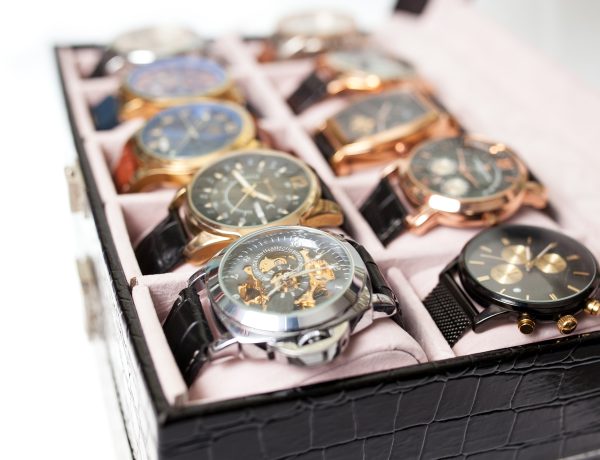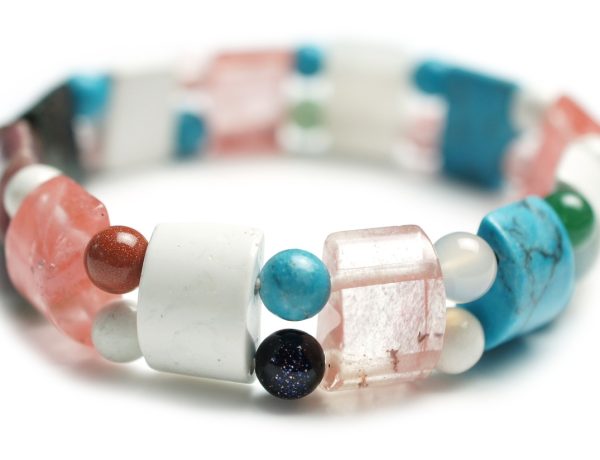Getting engaged is one of the most exciting times in a couple’s life. It is also an expected milestone for most couples in love that they will eventually reach this point and commit to spending the rest of their lives with one another. From intimate, romantic moments between two people to grand, public declarations of love, there are hundreds of different ways a proposal can happen, and in modern society, more and more women are the one getting down on one knee.
 For thousands of years, it has been customary for the man in a traditional relationship to provide the woman with a ring of sorts. However, it was not always a diamond, and it was most certainly not always a representation of the love and commitment the couple shares.
For thousands of years, it has been customary for the man in a traditional relationship to provide the woman with a ring of sorts. However, it was not always a diamond, and it was most certainly not always a representation of the love and commitment the couple shares.
THE EVOLUTION OF THE RING
The use of rings within a relationship dates right back to prehistoric times where men would wrap cords around their partner’s waist, wrists or ankles. The ties were crafted from braided grass and were used to take the female spirit under the man’s control. Used more as a token of ownership and control rather than love, this practice continued for hundreds of years.
 It wasn’t until the ancient Egyptians came along, thousands of years later, that the ring became a symbol of love and was worn on the finger. The romantic Egyptians felt that the shape of the ring embodied the idea of eternal love between two people and the opening in the ring was the gateway to their future together. Wedding bands were a separate entity, as they are today, and were made of braided reeds, worn by each partner. Rings were worn on the left hand on the finger between the middle and little fingers. This is now aptly called the ring finger and is still where people wear their wedding bands, and in many cultures, their engagement rings. This finger was chosen due to the belief of a vein running from here to the heart, although later discovered to be untrue, this vein was named the in 1686, which means ‘vein of love’.
It wasn’t until the ancient Egyptians came along, thousands of years later, that the ring became a symbol of love and was worn on the finger. The romantic Egyptians felt that the shape of the ring embodied the idea of eternal love between two people and the opening in the ring was the gateway to their future together. Wedding bands were a separate entity, as they are today, and were made of braided reeds, worn by each partner. Rings were worn on the left hand on the finger between the middle and little fingers. This is now aptly called the ring finger and is still where people wear their wedding bands, and in many cultures, their engagement rings. This finger was chosen due to the belief of a vein running from here to the heart, although later discovered to be untrue, this vein was named the in 1686, which means ‘vein of love’.
Rings took a step back again in Roman times, according to Pliny the Elder who was a Roman author. Engagement rings during this period were, again, a symbol of ownership and property. There were two rings involved in the contract, an iron one for wear around the home and a gold one, which was exchanged at the wedding ceremony, and worn only for special occasions.

Photo by woofiegrrl 
Over a century later, rings were still teetering on the edge of ownership when sultans and sheikhs would give their partners a puzzle ring. These rings were specially designed to fall to bits if removed and therefore minimized any risks of infidelity. Females only wore the rings in the relationship.
The ring did not come back to depict love or care until 860AD. Pope Nicolas made it a requirement that a woman is presented with a gold ring, by her male partner, as a mirror of his wealth and ability to look after her.
The first diamond appeared on an engagement band in 1477, centuries later. Mary of Burgundy was given a gold band with the letter ‘M’ detailed in diamonds by her partner, the Archduke Maximillian of Austria. The ring gained a lot of attention and later became a trend among the most affluent.
Poesy Rings grew popular in the 1700’s which encompassed beautiful poems inscribed along the band. They were incredibly romantic and continued to be popular into the 1800’s where the addition of brightly colored gems and clusters were added into the mix. Ornate rings continued through from the Victorian times right up until the Edwardian times, where they were called Dearest Rings. Victorian and Edwardian rings are still popular choices now, for lovers of vintage designs.
Diamonds became much more accessible in 1867 when mines were located in South Africa. It was only two decades later that the esteemed & Co launched a new design, which they called the ‘Tiffany Setting’. Using six prongs, the diamond was elevated above the band to create a more prominent dazzle.
Custom designed engagement rings became fashionable in the 30’s as couples wanted to present their own personality and love through what the ring represented.
DIAMONDS ARE FOREVER
 In 1938, the economy after WWI and during the Great Depression resulted in the decline of the diamond industry as demands fell. However, large enterprise De Beers was persistent and created a marketing campaign to boost interest, which is still one of the best of its kind to date. A decade into the campaigning, a new slogan was released, which stated ‘A Diamond is Forever‘. During this period, females were led to believe that a diamond was the only thing good enough to be a measure of true love and it became an inevitability within a relationship. Men were expected to spend an entire income earned in a month on a ring. Otherwise, it wasn’t enough. This was later increased in the 1980’s when the campaign published another line suggesting they spend two months: ‘Isn’t two months’ salary a small price to pay for something that lasts forever?’.
In 1938, the economy after WWI and during the Great Depression resulted in the decline of the diamond industry as demands fell. However, large enterprise De Beers was persistent and created a marketing campaign to boost interest, which is still one of the best of its kind to date. A decade into the campaigning, a new slogan was released, which stated ‘A Diamond is Forever‘. During this period, females were led to believe that a diamond was the only thing good enough to be a measure of true love and it became an inevitability within a relationship. Men were expected to spend an entire income earned in a month on a ring. Otherwise, it wasn’t enough. This was later increased in the 1980’s when the campaign published another line suggesting they spend two months: ‘Isn’t two months’ salary a small price to pay for something that lasts forever?’.The diamond is not only the preferred engagement ring jewel of choice in western cultures. It has been the tradition for years that the women in China wear a simple ring on their right hand when engaged and transfer it to their left hand following the wedding ceremony. However, since the 2000’s, the presence of diamonds has increased and now 30 percent of married women in China fashion diamond rings. A similar transition also occurred in Japan back in the 70’s.
Recent statistics show that China and India, along with the States will be the leading countries in the industry over the next ten years. Not surprising, since 80 percent of proposals in America already include a diamond. Beyond this, however, it may not be too early to predict that 3D diamond rings could become the norm, along with custom designs continuing to prevail.
Read more lifestyle and pop culture articles at Cliché Magazine
Images provided by Flickr CC License




